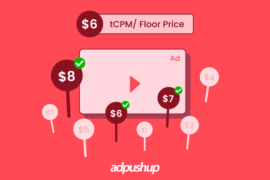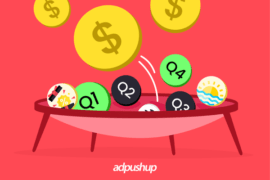Get an in-depth understanding of Yield Optimization, how it works, and, most importantly, how to get the most out of it.
The programmatic advertising industry evolves constantly, offering new opportunities and technologies to enhance the advertising experiences for users. And thus, new advancements and opportunities for publishers to enhance their advertising efforts, make them more impactful, and earn greater ad revenue.
But these opportunities won’t materialize on their own. Publishers need to take proactive steps to optimize their advertising strategy. And one of those steps is Yield Optimization.
What is Yield Optimization?
Yield optimization is all about working on various optimization techniques and analyzing extensive data in an attempt to maximize the value of digital advertising.
- For advertisers, the focus is mostly on how to maximize the yield from their ad impressions.
- For publishers, yield management is studying relevant data, analyzing the elements in order to figure out the need for change or upgradation, and changing their ways to maximize their revenue and efficiency, and thus their yield.
Did you know that currently, the digital marketing industry is evaluated to be at a massive value of $460 billion? In fact, just in the past year, we’ve observed over 63% of global businesses raising their digital advertising budget.
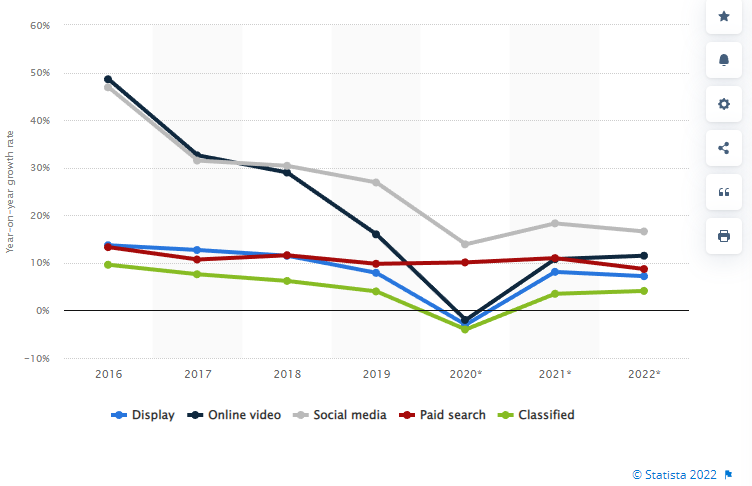
We will only see a steady rise in these strategies and amounts as businesses try to step up the game inflating the market by 9% each year. This brings us to the most potent challenge that marketers all across the world try to tackle – Yield Management and Optimization.
Why Does Yield Optimization Matter for Publishers?
Yield management is a broad concept that overall aids publishers in getting the maximum value for their premium ad inventories in a limited space.
You sell your ad inventory to your buyers, and that’s the simpler description of the job. But the goal is to make the maximum profits.
Here’s where yield management steps in and helps you evaluate the right time, place, and buyer to whom you sell the right ad and are rewarded with the highest value possible. Thus, yield optimization is the ideal pricing strategy for publishers.
For example:
If you’re someone who flies and checks in hotels occasionally, you must have observed prices varying every hour. In the case of cabs, you must have seen surge pricing. The reason for this dynamic pricing is to sell at the best prices based on market demand.
Similarly, yield management enables publishers to sell ad inventories by structuring a variable pricing strategy. The system of yield management for publishers enables:
- Formulation of pricing strategy based on consumer behavior and demand predictions.
- Allocation of different pricing on different demand sources and demand time/season
- Possibilities of highest prices/CPMs and max fill rate.
Speaking of yield optimization, yield management can’t be left behind. Both these terms are sometimes used interchangeably, but there’s a difference. Let’s have a look at what yield management is.
What is Yield Management?
Yield management is a flexible pricing approach that helps ad publishers maximize revenue by adjusting ad inventory prices based on various factors. This strategy lets publishers modify pricing according to user behavior, demand forecasts, seasonal trends, and the origin of demand. By doing so, they can achieve the highest possible CPM and maintain a strong fill rate
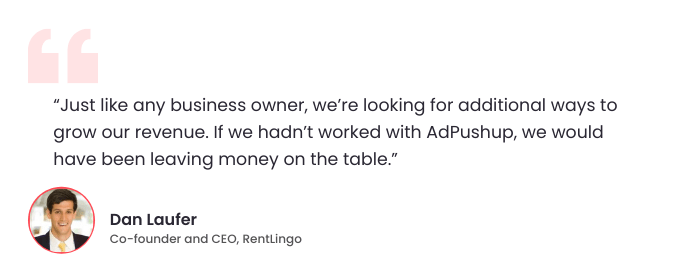
What are the Methods to do Yield Management?
To avail of the maximum returns, you need to make sure each of your impressions is countable. And for that, we usually take three important routes:
- Private Marketplaces (PMP)
- Real-Time Bidding (RTB)
- Programmatic Direct.
Each of these has its fair share of benefits. Here you go:
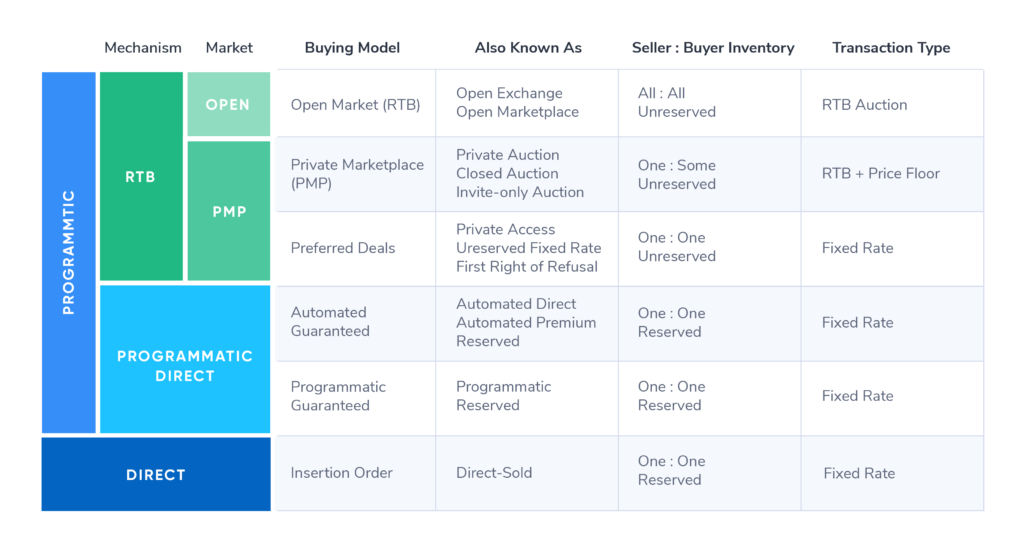
First things first. Before getting into best practices or strategies to leverage yield management, it’s necessary to at least have a roadmapーwhere and how to do yield management. For instance, Real-time bidding can help you attain unbelievable prices it is also not a certain way like the others. Programmatic Direct can help you attain impressive high CPMs, and it is also a long-term strategy.
So, let’s see one by one what each of these entails.
Real-Time Bidding (RTB) for Yield Management
RTB helps you sell your ad inventory to buyers in real-time. In relation to yield management, it helps you determine the highest margin and maximize your profits from remnant (also premium) inventories.
Deemed to be of the best channels for publishers, RTB or Real-Time Bidding is the concept where the buyers bid on the available inventory, and the publisher can choose the highest bidder.
Thus, if you cannot figure out what is the maximum limit to which your ad inventory can be sold, your bidders themselves will tell you.
Programmatic Direct
This method lets you deal directly with and negotiate with buyers. Here, publishers get the benefit of automated negotiation and sales of their direct-sold inventory with the intent to drive in the highest CPMs.
Programmatic Direct helps publishers reach the optimal target audience for their available unsold ad inventory. This method works with demand-side platforms, Ad networks, Ad exchanges, SSPs, and so on.
This also includes automation of the process, the algorithms, technology, and data to efficiently buy and sell the process retaining the highest values from the DSP and other areas.
Private Marketplace (PMP)
This is an invite-only marketplace where high-caliber publishers pick advertisers they’d want to sell inventories to. Here, the transactional environment is limited, but the scope of customization in inventory packaging is wider.
It is the method of yield management that enables publishers to sell their inventory in limited spaces. This still allows one to attain the highest revenues.
The process of Private Marketplace (PMP) works similarly to RTB, but here only invited advertisers can bid on the premium inventory and get impressive high prices. It also helps maintain the quality of the premium inventories by not taking in random advertisers.
Advanced Strategies for Yield Management
Apart from these popular channels, there are also these other advanced strategies that publishers should know and use for yield management.
1. Geo-Targeting
This process requires you to target your location-appropriate inventory or localized content to an audience that is limited to a similar geographic location. Thus, this helps offer the audience a more relevant experience.

For example, when you receive a Facebook ad for, suppose, a coffee shop down the street, and not a coffee shop in Berkeley, but, of course, you live in Berkeley, it’s because Facebook’s ad servers know you live in relative proximity to the business being advertised.
2. Dedicated Ad Server
While geo-targeting is for a localized audience, if you want to tackle a larger scale, this is where you need a suitable dedicated ad server. This method helps you specify what your priorities are for the bidding and where your other preferences and criteria fall, and the ad server will target the relevant user accordingly.
3. Programmatic Ad Targeting

Ad targeting is the concept where the metrics are utilized to make the most out of their pricing and ad inventory. This can include allotting the inventory to several categories such as location, devices or demography, and more. Thus, it becomes all about understanding which metric can help the most and where and acting accordingly.
4. Optimize for Mobile
While many businesses fail to keep track of this, mobile optimization for yield optimization is as much crucial as it brings in more than half the traffic.

Thus, as a publisher, make sure that your mobile ads are visually appealing, load quickly, and provide a seamless user experience. This helps to attract more engaged readers and increase the likelihood of ad viewability.
5. Enable Ad Refresh
Another method to improve your yield optimization efforts is by enabling ad refresh. Ad refresh allows publishers to dynamically update the ads displayed on a webpage, which increases the number of ad impressions a user sees per visit. This is achieved by automatically refreshing the ad sets based on specific conditions or triggers.
6. Optimize Ad Inventory
Optimizing your ad inventory from time to time can make a huge difference. This would turn out to be more impactful in certain seasons like Christmas, Thanksgiving, etc.
However, it’s important to test your strategy well before any major event launch. You can also use Adpushup’s A/B Testing tool, which is specifically made for publishers. By making the right adjustments to your website, you can drive higher interaction, which allows advertisers to achieve better conversion rates from their ad impressions. Additionally, stay vigilant in monitoring a variety of metrics to ensure optimal performance.
7. Update Ads.txt
Ads.txt is a tool that allows publishers to declare the names of companies authorized to sell their ad inventory. IAB introduced this technique to maintain transparency and keep the programmatic advertising ecosystem safer.
As a publisher, you should ensure that your IAB.txt file is accurate and up-to-date to maximize ad revenue. By providing a clear list of authorized sellers, you attract more qualified bidders, leading to increased competition and higher ad rates. This streamlined process benefits both publishers and buyers, and this results in a more efficient and profitable ad ecosystem.
8. Ad Block Recovery
A recent eMarketer study found that nearly one-third of internet users worldwide employ ad blockers at least occasionally. More and more people are using ad blockers, preventing websites to display ads, and costing publishers a considerable amount of ad revenue.
However, publishers can tackle this problem with the help of an Ad Partner. AdRecover can help publishers tackle its pro-user adblock solution. Adoushup’s Adrecover solution bypass technology ensures compliance with acceptable Ads and minimal UX impact so that you can maximize your adblock revenue without impacting user satisfaction
Challenges Publishers Encounter In Yield Optimization
The pathway to performing yield management and yield optimization may feel bumpy at times. Here are some challenges publishers often face:
Since Real-time bidding is an evolving process, yield managers are never done with assessing their inventory. Consequently, formulating a floor pricing strategy gets tricky sometimes.
Publishers also often reach a point of standstill where the yield management system becomes multidisciplinary. So to keep going, publishers have to cater to multiple verticals, viz., rate management, revenue stream management, and distribution channel management.
Yield management strategies also require characteristics of marketing, operations, and finance (better if you have experts in your team). Therefore it leads to creating interdepartmental dependency.
Tips to Improve Your Yield Optimization Efforts
As we drive towards the finishing point of yield management, let’s pull the break with some quick improvement pointers. So make sure you:
- Follow real-time data, for example, genuine count of CPMs and data volume from different sources.
- Increase and fine-tune your demand sources to increase bid competition. Have a bid strategy ready before you start with yield management.
- It is recommended that publishers always adhere to Google Adsense policies. This ensures reliability and credibility. Neglecting these guidelines could result in advertisers choosing not to partner with the publisher.
By having this stage-by-stage guide in place, you should get some ideas and motivation. The steps cited above should help you to start articulating your yield management strategy.
Getting Started with Ad Yield Management Optimization
Being a publisher, I’m sure you aim to clear stocks of your inventory in the most lucrative manner; instead of settling for average revenue. Here are the must-have techniques to optimize ad yield:
Header Bidding
Header Bidding is an advanced programmatic advertising method which is also referred to as advance bidding or pre-bidding, which serves as an effective alternative to Google’s ‘waterfall’ concept. Here, publishers are allowed to simultaneously send bid requests to various demand partners, agencies, and SSPs, in turn maximizing the value.
Header bidding satisfies the publisher’s need for a transparent, flexible, and effective way to run automated auctions. It allows the publisher to hold direct auctions and thus actually get a high real-time value which usually websites and networks fail to provide.
Google Ad Exchange (AdX)
AdX allows you to connect with multiple demand sources. The intent is to increase competition around impressions, get more demand for your inventory, and hence ensure better yield.
Google AdX offers publishers a strong and competent platform where they can access the advertisers that are willing to bid in real-time on their ad inventory. This is an efficient and easy process, where you don’t personally have to be much involved, and Google can take care of yielding the highest value.
Native Ads
These native ads blend in with the content published on the publisher’s website. Consequently, advertisers get better RoI because of the improved visibility of their ads/content in the editorial feed, and the publisher generates greater revenue.
Native advertising works on the idea of publishing ads that are non-intrusive and so at ar with the page content that its design, outlook, and feel are assimilated into the content, giving it the feel of the ad belonging there.
Native ads have much higher turnovers from the audience than most other advertising formats. Overall improves the visual quality and appeal, which helps advertisers turn a good ROI, and to publishers, it offers impressive high ad revenues.
Direct Deals
As the term ‘direct deals’ suggests, this sort of dealing empowers inventory-seekers to buy from you directly. Since there are no middlemen involved in the dealing, you get entitled to higher revenue.
These are as simple as buying and selling cookies or clothes. You reach out to the advertisers who are looking to buy inventory directly from the publishers.
This method also entirely leaves the control in their hand, with the publishers at access to user data and also in control of what is displayed when and where. This doesn’t necessarily mean the publisher has to directly contact the potential advertiser, an agency or a negotiator can be involved in the process.
However, this means a direct deal. No auctions and inventories are sold at fixed rates set by the publishers.
To Summarize
Now that you have a clear idea of what yield management is and how to go about it, it is time to step up your game and start earning high profits.
Yield optimization is not simply one of the many available strategies to try out. It is a holistic concept, which is an absolute necessity for publishers if they wish to maximize their revenue to the fullest value.
After all, the goal behind finding advertisers to sell your inventory is obtaining the highest ad revenues.
Are you tired of leaving ad revenue on the table? It’s time to take control of your yield and maximize your earnings. We at AdPushup are a revenue optimization platform that helps publishers increase their ad revenue and yield with our advanced techniques and tools. Book a free now!
Frequently Asked Questions
Yield optimization advertising can be done both manually and automatically. A yield optimizer supports the latter by offering an automated service that helps with the process of yield optimization and brings out the maximum revenues by working with advertisers, potential inventory seekers, DSPs, agencies, and so on.
Yield Optimization can be done in several ways – By tackling concepts like PMP, Programmatic Advertising, and RTB. Some other alternate ways include – optimizing your inventory, working according to AdSense regulations, understanding key metrics and targeting accordingly, Google Adx, geotargeting, and so on.
And most importantly, don’t be afraid to break the limits and experiment with new and innovative ways!

Deepak has a keen eye for detail and a deep understanding of the ad tech landscape. Whether it’s through in-depth articles, thought-provoking insights, or compelling storytelling, he’s dedicated to helping people navigate the complex world of ad tech with the simplicity of his words.



